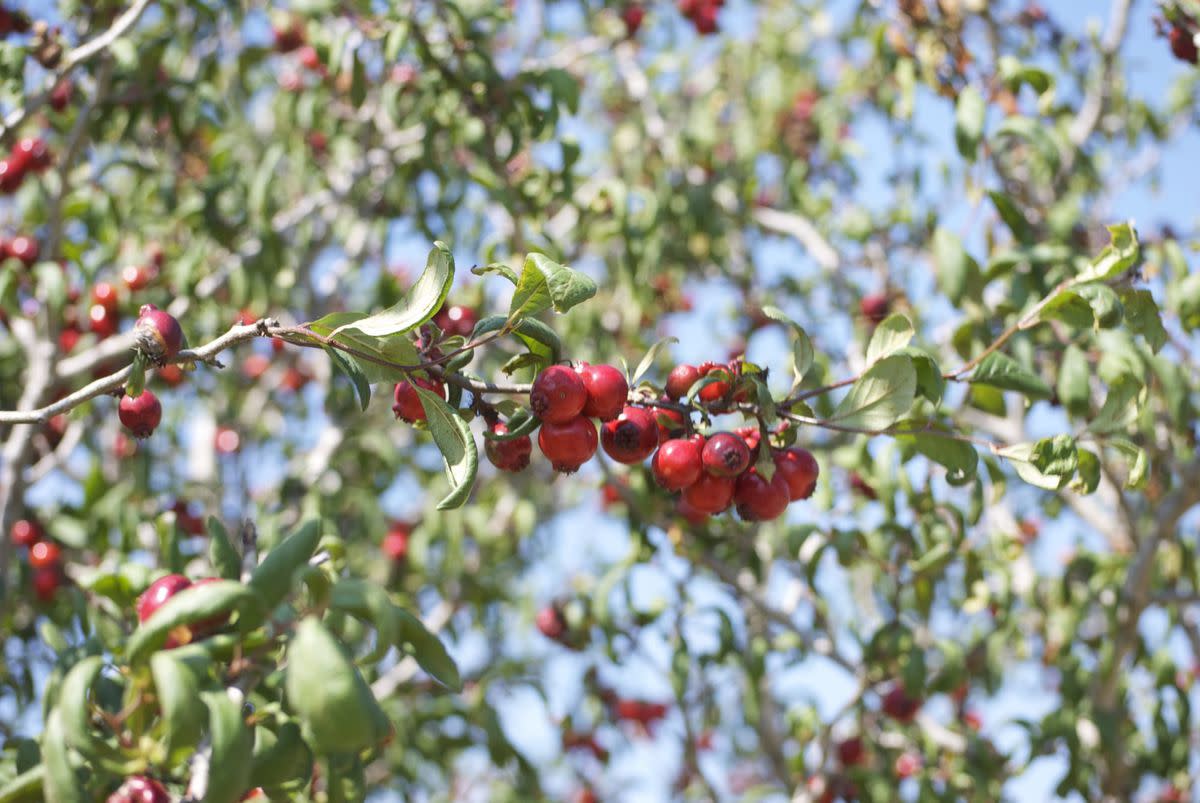What's a Mayhaw?

Courtesy of Louisiana Mayhaw Organization
TABLE OF CONTENTS
On This Page
What is a Mayhaw?
How To Eat Mayhaw
History of Mayhaw
Where To Find Mayhaw
My family loves mayhaw. What's a mayhaw, you ask? If you asked my nephew, he'd say, "Mayhaw—that's the jelly I like." If you asked my mom, she'd say, "Mayhaws—that's those berries I have to pick up every May." When I call my mom during May, she's most likely under the mayhaw trees, gathering mayhaw, preparing juice, making jelly, and freezing the leftover berries for later. The mayhaw, the fruit of the mayhaw tree, is a lesser-known harvested berry in—you guessed it—May. They're actually hawthorn berries that ripen and drop in early summer, around May.
What is a Mayhaw?
Mayhaw trees (Crataegus aestivalis, C. opaca, and C . rufula) are indigenous to the southern United States and grow in the wild as far west as Texas. They thrive in South's wetland environments and produce small, tart-to-tasteless, berry-sized fruits that range in hue from yellow to red. In the wild, mayhaw berries look similar to cranberries or small crabapples. They vary in taste, but the berries are usually fruity and tart. Most would say they're far too tart to eat straight from the tree—and that's where the jelly comes in.
How To Eat Mayhaw
The joy of the mayhaw is the making of its eponymous jelly. Mayhaw jelly is one of the South's greatest culinary pleasures, at breakfast or otherwise. Slather it on a slice of toast or add it to a dessert dish, and you'll find yourself enjoying a truly Southern flavor, a sweet jelly with just a hint of puckering tartness. The perfect color of mayhaw jelly depends on your taste preferences, jelly-making skills, and the year's berry harvest. Still, my family prefers a jar of clarified crimson, a clear cranberry hue. Mayhaw syrup is also a Southern favorite. You can make jelly and syrup or buy it—a strategy that provides all the flavor and requires no effort.
History of Mayhaw
Mayhaw trees, growing near the edge of swamps, were not sought after because their initial flavoring was undesirable until people started making it into jellies. After discovering this hidden gem, families started annual family ventures to pick mayhaw. This process included using boats and nets to travel through the swamps and collect the berries from the bog. These fruits contain a few tiny seeds inside the white interior but mature into yellow and red fruits.
Where To Find Mayhaw
Today, some Southern towns celebrate mayhaw by hosting spring—and summertime—mayhaw festivals. (Cities such as the following: Colquitt, Georgia; Daisetta, Texas; El Dorado, Arkansas; Marion, Louisiana; and Starks, Louisiana—All have annual mayhaw fests.)
If you're curious or like mayhaw as much as my family, you'll want to drop by a mayhaw festival and taste-test some jellies the next chance you get.
Thanks to my mom's mayhaw-gathering and jelly-making efforts, we're flush with mayhaw spreads all year. If you want to cultivate your own, you can buy mayhaw trees for future harvests (here and here), or you can go searching. Look for a mayhaw tree if you find yourself near a creek or river in the South. If it's May (and if you're lucky), you may soon be looking at the makings of some tasty mayhaw jelly.
Have you tasted a mayhaw? How about mayhaw jelly? We know more than a few Southern families—not just mine—make a big batch every year in the summertime.